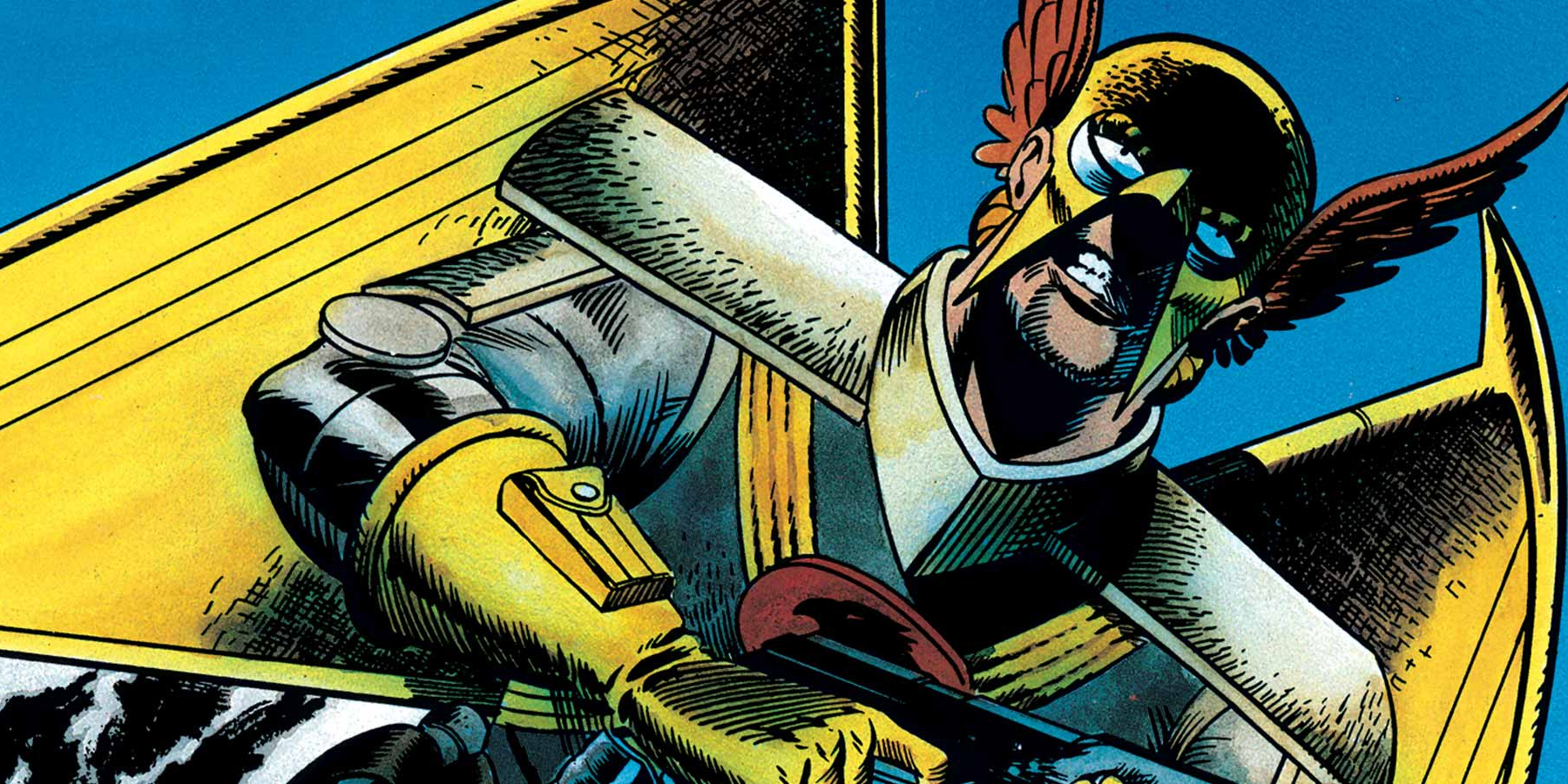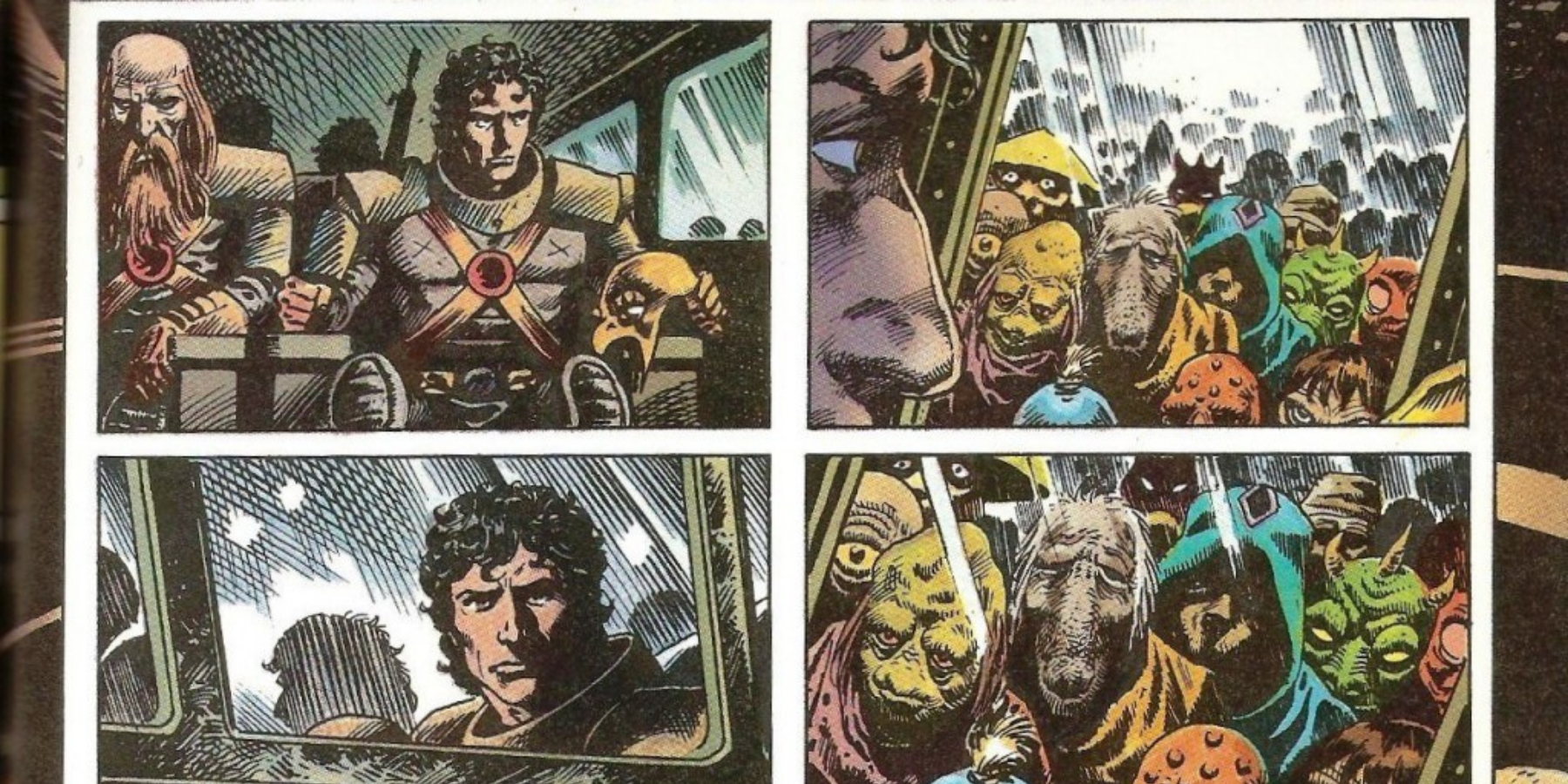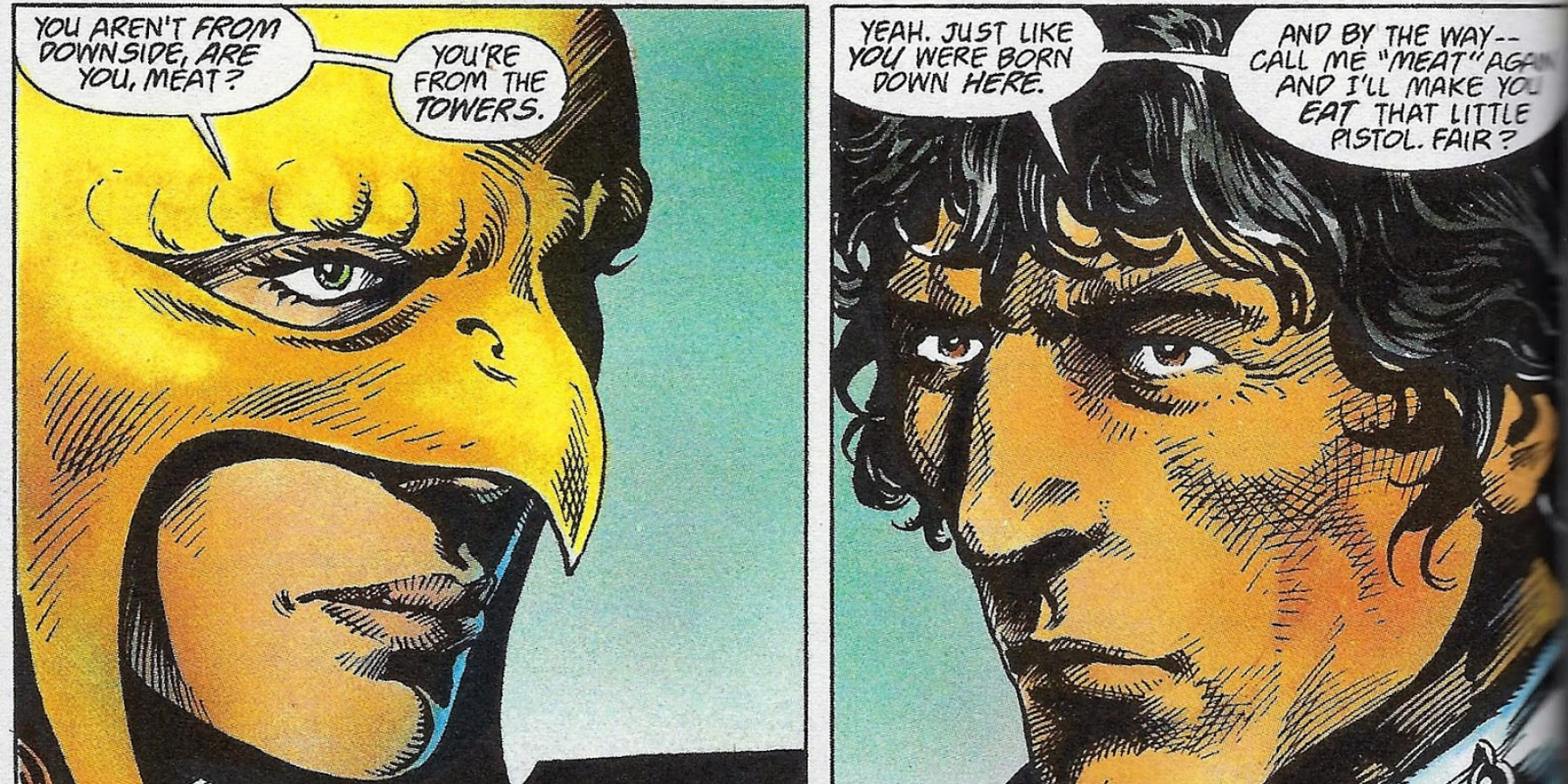
Like many characters in the DC Universe, Hawkman has undergone multiple changes over the course of the character's 80-year history. Initially, the concept was (relatively) simple: in the 1940s. archaeologist Carter Hall discovers he is the reincarnation of an Egyptian prince, uncovers a pair of gravity-defying wings and employs a stylized hawk mask and ancient weapons to fight crime. This version of the character was later replaced when editor Julius Schwartz reintroduced a number of previous DC characters (such as the Flash, the Atom, and Green Lantern) with newer, more science-fiction-themed heroes befitting the space-age 1950s.
The Silver Age Hawkman, alien police officer Katar Hol, would endure for many years as a mainstay of the Justice League, but eventually underwent sweeping changes in the wake of the seminal Crisis On Infinite Earths. Reintroduced in Tim Trumanprestige format mini-series Hawkworld, the new Katar Hol was at once similar to but also quite different from the previous incarnation of the interstellar lawman.

Hawkworld opens on a Thanagar that is decidedly different from the glittering science fiction utopia of the Silver Age Hawkman tales. In this reintroduction to Hawkman, Thanagar is the heart of an intergalactic empire comprised of multiple conquered worlds. On Thanagar, the landmasses aren't large enough to sustain both the human population and the aliens who serve at their beck and call. Instead, the cities have expanded upward, with the well-to-do Thanagarians wearing gravity-defying wings that allow them to fly amid their high towers and live a life of luxury.
Meanwhile, the conquered aliens live their lives in abject poverty, subject to the constant theft of vital food and medical supplies by criminals. Young Katar Hol joins the Thanagarian Wingmen as an idealist in love with his world's noble past but quickly wakes up to the harsh realities of life as an enforcer of policy in a corrupt, imperialist system. Betrayed by his superior officer Commander Byth, Hol is exiled and imprisoned for ten years before returning to the downside as a wingless outcast. Rebuilding his life, he discovers one of the few clean members of the Wingmen in the form of Shayera Thal. The two manage to take down Byth and stop a war between the downside and the towers. Dispatched to Earth in pursuit of Byth, the series concludes with the same basic premise as Hawkman's original Silver Age origin story.

Like many revisionist superhero comics of the '80s, Hawkworld is very much a deconstructionist take on Katar Hol's origin. The shining spires of Silver Age Thanagar are still present, but the Thanagarians themselves are a people benefitting from exploitation, slavery and colonialism that places them firmly on top and the non-human aliens of their empire very firmly on the bottom. The Wingmen are not the shining heroes of the Silver Age, but a combination of a police force and occupying army, and the tensions between the classes are only exacerbated by the dealing of drugs for guns between parties in the downside and the towers. Katar himself is a man who is ground down by the system but eventually overcomes it through the aide of Shayera and his own drive to find Byth and take revenge. But for all his triumph and reinstatement to the Wingmen, the system still endures: the corruption and oppression is still there, unabated.
Katar Hol would eventually be folded into the story of Carter Hall himself when the two characters were retroactively determined to be incarnations of the same man, the Egyptian monarch Prince Khufu. He and his wife Chay-Ra were murdered by the evil Hath-Set and became trapped in a seemingly endless cycle of death and reincarnation. Much like most superheroes, who are continually rebooted and relaunched over and over to keep up with the times. Katar Hol and Hawkworld remain a vital part of Hawkman's backstory, and the tale itself is well told and very relevant to this day.
0 Comments